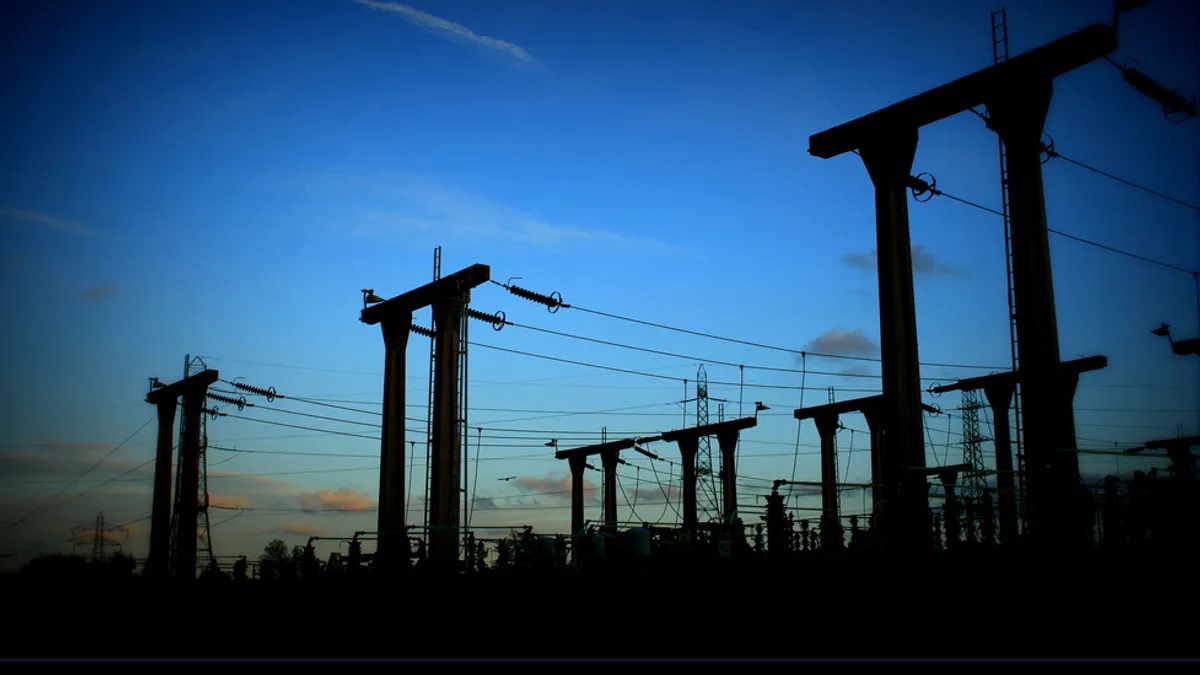2014, it almost goes without saying, was a big year for demand response (DR). It may — cliche aside — have been both the best and worst of times.
In many ways the news was good: The industry saw a surge in innovative ideas and technology, with a strong focus on customer engagement. But wholesale markets lost the resource when a federal appeals court vacated FERC Order 745, removing demand response from the PJM energy market. And First Energy's challenge, to have the resource removed from capacity markets as well, threatens even greater consequences.
"We saw a very public fight brought by generators," said Matt Plante, CEO of demand response provider EcoFactor. That fight then "morphed into an all-out attack against demand response."
But on the flip side, Plante said there is now "more evidence that cost-effective residential DR exists … and that such demand response, when done well, actually increases customer comfort and customer satisfaction."
The industry is still poised for growth. Whether or not demand response competes in wholesale markets, it will continue to be an resource for utilities. But the court's decision and ensuing uncertainty have cut into the industry's potential. Analysis by Greentech Media found the annual growth rate of the demand response industry dropped from 8% down to 4.9% annually through 2023 as a result.
On pace to be a $2.9 billion industry by 2023, Greentech now estimates the market will only reach $2.3 billion by that point. But demand response providers remain largely positive and focused on the year ahead, when they believe new technologies will expand opportunity and make demand response a year-round resource.
What's ahead for the industry?
A key area of focus is technology. Prices are dropping for smart thermostats, and as more renewables come online demand response is being considered to help integrate them.
Steve Hambric, vice president of strategic sales and operations for demand response provider Comverge, said his company has observed increased deployment of two-way devices over the past year, technology capable of exchanging information over either wifi or cellular networks.
"This provides utilities unparalleled levels of reliability, predictability and availability," Hambric said. "This enables utilities to leverage demand response as an everyday component of the supply mix, better integrate renewable sources of energy, and participate more effectively in capacity and energy markets. We expect this two-way demand response trend to accelerate in 2015."
Vivin Nath, product manager for EcoFactor, also said demand response will become a more ubiquitous resource. Nath believes the coming year will yield greater numbers of integrated demand side management programs that also provide ancillary services to grid, allowing for higher levels of renewable power on the grid.
That connection between renewables and DR as an ancillary service can help make the those demand side programs "a mainstay in the energy business for many years to come," he predicted. "Also, we will see utilities opening up to year-round DR programs (instead of just summer and winter peak reduction programs) to continuously manage their loads in a cost-effective manner."
Opower Vice President Kevin Hamilton noted that "across the industry you saw big investments in the underlying technology infrastructure that allows us to push demand response forward."
That underlying infrastructure includes data analytics capable of more quickly analyzing power demand, meaning response programs can be scaled up to millions of customers. It also involves significant work done to consider and improve the customer side of the experience, especially as companies increasingly see that boosting customer engagement with a program is key to maximizing its potential.
That means in the future when utilities are considering demand response they may consider the programs an asset to their customer outreach, not just load management.
"We saw incredibly high customer satisfaction in a product you don't typically think of customers loving, which is asking them to make adjustments on really hot days to their energy usage," Hamilton said of Opower's customer feedback research. "And we also saw some indications it was increasing overall satisfaction in the utility."
So with that look at what's on the industry's mind as we head into 2015, here are a few of the major demand response stories and ideas that demanded attention this year:
The Order 745 Saga
In May, the U.S. Court of Appeals for the D.C. Circuit vacated FERC Order 745, setting off a chain of events that left the industry uncertain. While demand response was a modest participant in power markets, First Energy filed to have demand response removed from capacity markets as well. A group of New England generators joined their complaint last month.
The Obama administration has signaled it will appeal the decision to the Supreme Court. John Podesta, the White House's environmental point man, said at a conference this month that the administration views the D.C. Circuit ruling as "a very significant and mistaken decision."
Though it is the more complicated process, many observers say a legislative fix could be the clearest way to determine demand response's role in wholesale markets. New Mexico Sen. Martin Heinrich (D) has introduced legislation that would unambiguously charge FERC with regulating demand response in wholesale markets, but it seeks to modify the Federal Power Act and even supporters say that could open up a long and daunting legislative process.
A Way Forward – PJM's plan
In the wake of the court's decision to vacate Order 745, PJM rushed to put together its vision for how demand response could continue to participate. Nothing in the court's decision, PJM said, would prevent it from taking actions to recognize wholesale curtailment efforts. The grid operator sketched out a plan that would allow demand response to continue participating, with a focus on utilities and states.
PJM explained that in its view, the court decision still allowed it to account for curtailment, but only to the extent it reflected the action of a wholesale entity, such as a load-serving entity or competitive retail service provider, and only to the extent such curtailment reflects that entity’s own wholesale load.
That leaves out about 70% of PJM's demand response market, which comes from third-party aggregators, according to Michael Panfil, an attorney for the Environmental Defense Fund's Clean Energy Program. “And to make matters worse, they're saying yes you can provide this valuable asset, but we're not going to compensate you,” he said. “That's why you do need states to step up.”
Behavioral Demand Response
One of the more interesting demand response ideas is this concept of "behavioral demand response" — that customers want to conserve and will reduce consumption simply by being asked, or by being informed them of their neighbors' savings.
That willingness means utilities have a greater range of options available to them. For a variety of reasons, only about 5% of U.S. households participate in demand response programs. But Opower has worked with utilities to implement DR programs that do not require specific rates or equipment, instead using targeted outreach to simply ask for reduced power consumption.
"It challenges the mindset that to get customers to do something, you have to pay them in return, or penalize them," said Opower's Hamilton. The company found that in a test involving more than 1 million homes across multiple utilities and ISOs, customers with no load control device dropped their usage 5% just through behavioral cues.
Combined management of demand response, efficiency
Boosting engagement is key to successful demand response programs, and research shows customers increasingly want a single point from which to manage their energy consumption.
"With everyone going after the same customer, and you have different silos within the utility, different vendors, even retail electric providers throwing in their own outreach … the end result for the customer is a very confusing experience," said Comverge's Hambric. The company has issued a position paper outlining where it sees the value of integrating efficiency and demand response offerings, and what outcomes better alignment could effect.
"When these programs are implemented separately and measured on a standalone basis, a natural tension may develop as the programs have the potential to cannibalize each other," Comverge said in the paper. "However, when implemented in an integrated, coordinated approach, they have the potential to significantly increase the level of customer engagement and energy reduction to the utility."
Plug-in vehicles may be next great resource
And finally, as consumers begin to embrace the plug-in vehicle America's transportation fleet could become the next great demand response resource. By some estimates there are already a quarter million PEVs on the roads already — adding demand, yes, but also the potential to help smooth peaks and even feed power back into the grid.
The concept of PEVs as a distributed resource has been around a few years, but with advances in battery technology and the falling cost of larger storage options and chargers, electric vehicles could assist in frequency regulation to help integrate renewables into the mix. And PEVs could bid into ancillary markets, opening up new revenue streams and bringing down the cost to integrate the new technology.
Research published this year in Applied Energy journal evaluated the the cost effectiveness of using a V2G-capable school bus fleet, and found that for one district in Delaware with 179 buses, the switch could be worth $38 million. And the U.S. Air Force recently announced a pilot program in which 36 of the 42 vehicles at the Los Angeles Air Force Base are capable of taking power from, or feeding it back into the grid. The vehicles can provide more than 700 kilowatts of power to the grid and will enhance the power grid’s reliability and security by balancing demand against supply without having to use reserves or standby generators.






















